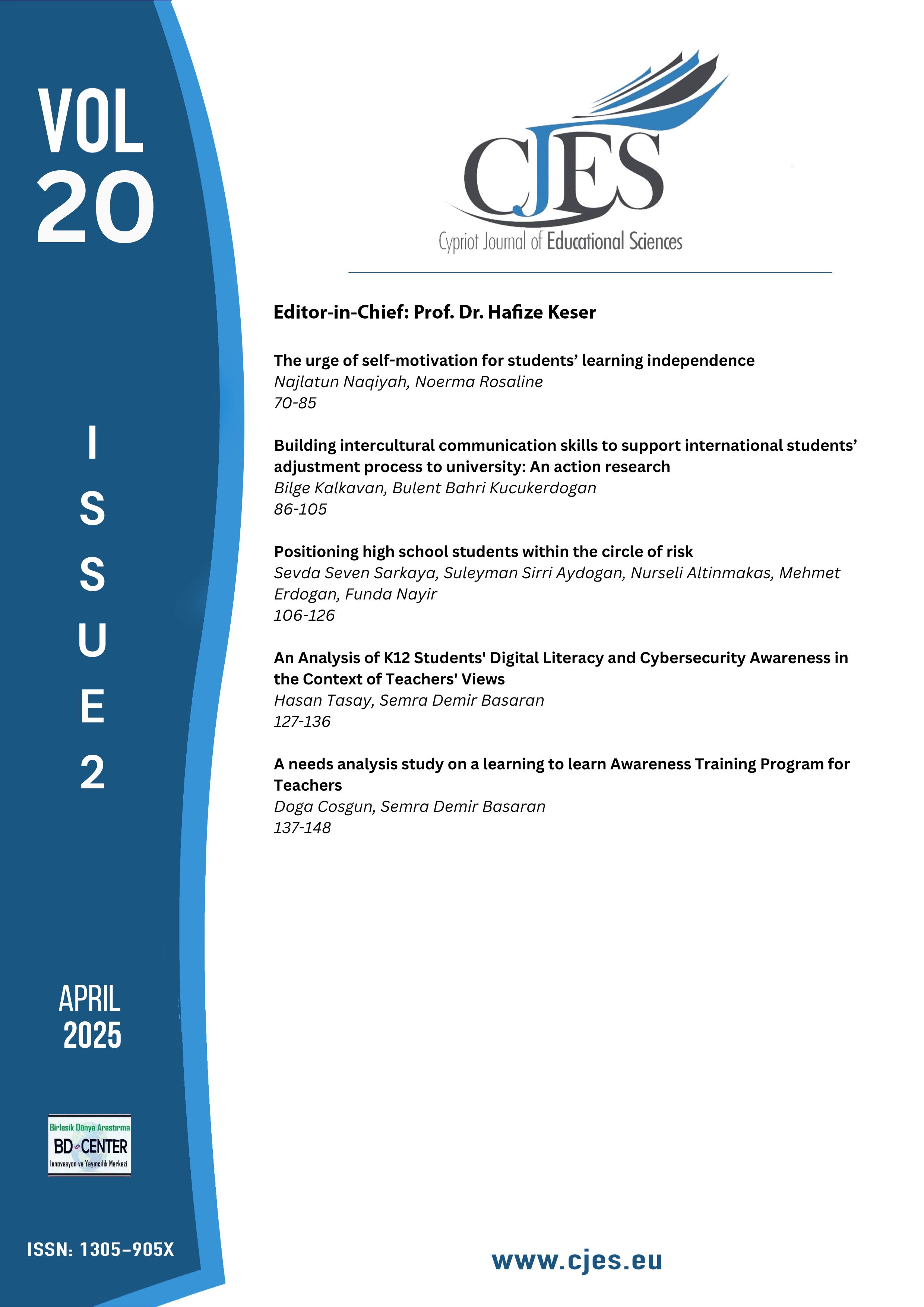Positioning high school students within the circle of risk
Main Article Content
Abstract
This study investigates adolescents’ tendencies to engage in risky behaviors, addressing a significant gap in understanding the multifaceted influences contributing to such actions. Although adolescent risk-taking has been widely studied, there remains limited insight into the interplay of individual, familial, institutional, and societal factors shaping these behaviors. The objective of the study is to explore the nature and underlying causes of risky behavior among high school students through a mixed-methods approach. The quantitative component involved 728 students selected through non-random sampling, while the qualitative component included 14 teachers and administrators chosen via maximum diversity sampling. Data collection instruments included the High School Form of the Risky Behaviors Scale and a semi-structured interview protocol developed by the researchers. Findings indicate that risky behaviors are gendered, with certain tendencies more prevalent among boys and others among girls. Contributing factors were identified as parental separation, socio-economic conditions, school type, and grade level. Qualitative insights revealed that family dynamics, socio-economic and cultural influences, individual characteristics, digital media, and school environment significantly shape students' risk-related actions. These findings underscore the need for comprehensive prevention strategies that address both individual and contextual determinants.
Keywords: Administrators; adolescents; high school students; risk behaviors; teachers
Downloads
Article Details

This work is licensed under a Creative Commons Attribution 4.0 International License.
Cypriot Journal of Educational Sciences is an Open Access Journal. The copyright holder is the author/s. Licensee Birlesik Dunya Yenilik Arastirma ve Yayincilik Merkezi, North Nicosia, Cyprus. All articles can be downloaded free of charge. Articles published in the Journal are Open-Access articles distributed under a CC-BY license [Attribution 4.0 International (CC BY 4.0)].
Birlesik Dunya Yenilik Arastirma ve Yayincilik Merkezi (BD-Center)is a gold open-access publisher. At the point of publication, all articles from our portfolio of journals are immediately and permanently accessible online free of charge. BD-Center articles are published under the CC-BY license [Attribution 4.0 International (CC BY 4.0)], which permits unrestricted use, distribution, and reproduction in any medium, provided the original authors and the source are credited.

